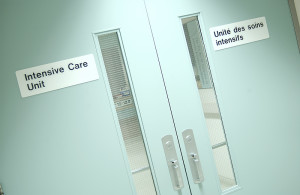What are the symptoms of celiac disease? There is more than one type of gluten intolerance condition out there. Celiac disease is one major type of gluten intolerance. The problem is that if you one, it may not be so easy to diagnose. Let’s take celiac disease for instance. Those who are diagnosed with it may have been labeled with something else at first.
Celiac disease is a condition of the digestive system that occurs when certain people eat foods containing the protein, gluten. Gluten can be found in certain grains: rye, barley, wheat and triticale (a wheat-rye blend). Often called celiac sprue or gluten-sensitive enteropathy, it is an abnormal response of the immune system when this protein is present. In the presence of gluten, the immune system attacks the intestine.
This occurs in the small intestine. Here, food that is broken down into its nutrient components are absorbed and then transferred to the bloodstream. The lining of the small intestine are covered with fingerlike projections called villi. They increase the surface area. When gluten is present in someone with celiac disease, the villi become flat, decreasing the surface area and damaging the intestines. This affects absorption of nutrients.
The lack of absorption impacts the entire body. In children, lack of nutrients can create a “failure to thrive” situation causing rickets (osteomalacia) and anemia. Children often exhibit these celiac-disease symptoms as soon as they are introduced to cereals. In adults, symptoms of celiac disease can include abdominal pain, bloating, diarrhea, vomiting, and constipation and foul-odor stools. Vomiting is more common in children.
The Problem with Celiac Disease Diagnosis
Celiac disease, like other digestive conditions, is hard to nail down. The symptoms common to celiac disease can be attributed to several other conditions within the digestive ailment spectrum. To make matters worse, some adults are asymptomatic. This makes diagnosis a challenge even though the small intestines are still being damaged by the body’s immune response.
Celiac disease is often mistaken for irritable bowel syndome (IBS) or even Crohn’s disease. IBS doesn’t cause damage to the intestines but that can only be proven through biopsy and endoscopy. Crohn’s disease can occur in any area of the digestive tract. There is a form of celiac disease called refractory sprue in which symptoms disappear when gluten clears the system but return even on in a gluten-free environment.
To get the correct diagnosis if you suspect celiac disease, check your family history. Certain genes can contribute to this condition. Of course, you can usually not experience symptoms if you avoid all forms of gluten. A “low gluten” diet is not going to be good enough if your sensitivity is higher. Complete avoidance becomes necessary. If someone in your immediate biological family has it, chances are you could be expressing that gene. Ask for an antibody test. Two antibodies will show up in blood work: Immunoglobulin A anti-tissue transglutaminase and Immunoglobulin A antiendomysial. An endoscopic procedure of the upper GI tract can confirm through biopsy of the small intestine as well as visual evidence. If your doctor does not know about gluten intolerance or celiac disease blood tests, you can get them done on your own here.
Misdiagnosis or lack of treatment can lead to more pain until you get the right program going. Once you do, give it a few weeks for the gut to repair itself. One fairly safe way to boost the healing process (unless you have a problem with sodium retention or severe high blood pressure) is DGL licorice. This form of licorice has had most of the ingredient that can raise sodium levels and blood pressure removed. But, DGL is amazing in its ability to heal the mucous membranes of the gut. You can get it here. Another product with a special form of aloe and other ingredients is Digestinol, available at this site.
And, if you are looking for a gluten free online store, Katz Gluten Free is a great site where you can discover tasty options.









